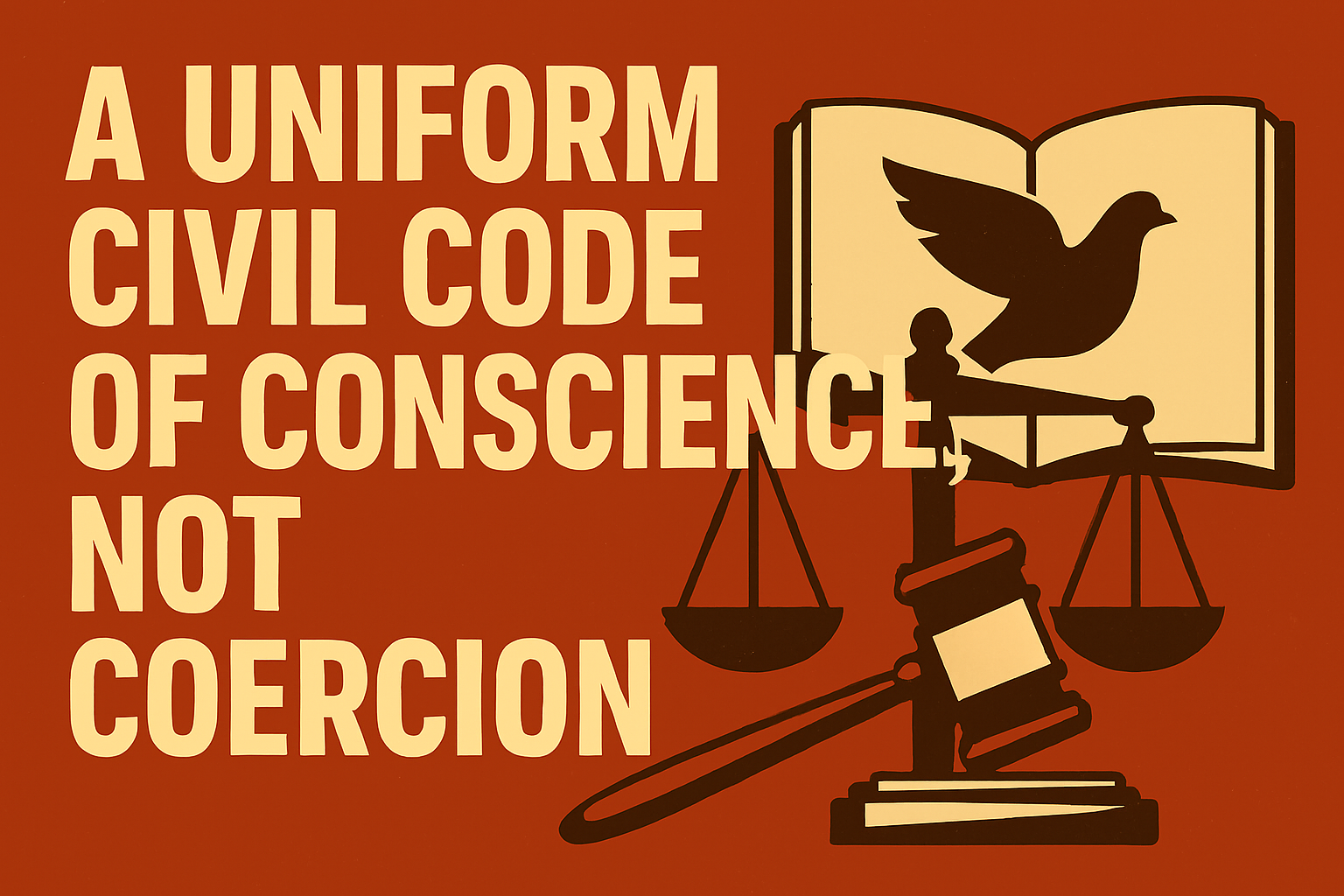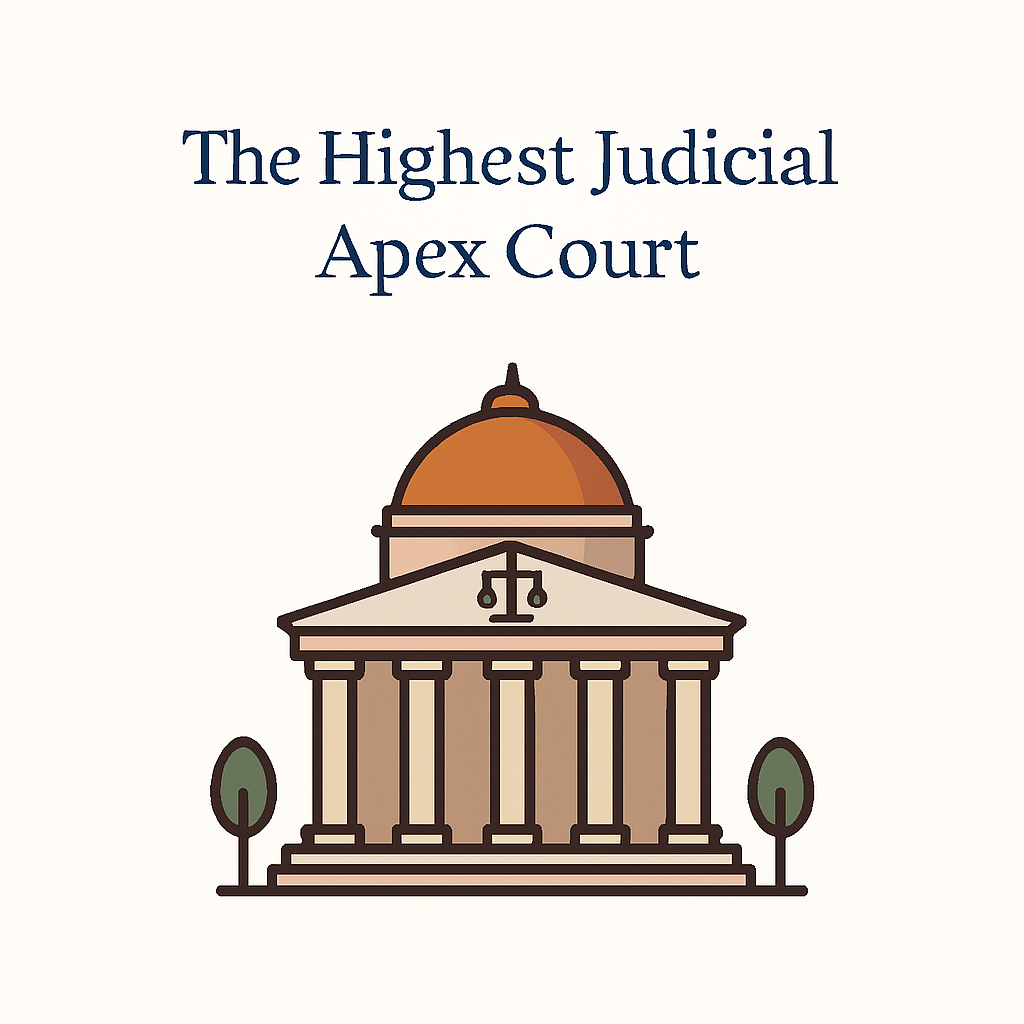



Author – Priyanshu Prakash.
College – Kalinga University Raipur
Introduction: The Pinnacle of Justice
The Supreme Court of India was formed after the independence in 1950.The court ensures legal fairness and equality before the law.This court is the highest defined power of court in the entire nation and this power to court is given by the Constitution of India. And this court safeguards the Constitution, and in return, derives its authority from it. The court is called the highest judicial apex court of India which has both Original and appellate Jurisdiction Structure. The work of the court is to address the legal and constitutional related issues which present in our Indian society and to provide justice to all citizens without any inequality and discrimination.
In countries like India the court does not just clarify the Justice and law but also provides the interpretation of law to the law forming body which is the legislature body of the government. However the Supreme Court, The part of judiciary and judiciary is an independent body out of the control of Legislative and executive bodies.
Historical Foundation and Constitutional Basis
The year of 1861 is the year in which there was an act established by the Britishers and that act is the Indian high courts act 1861. This act is established in all three British provincial regions of Calcutta, Madras and Bombay. So basically before the supreme court these courts were established in India and The creation of the Federal Court of India in 1937, it absorbed the jurisdiction of Sadar Adalats. Later on after the independence the supreme court was established on January 28 1950 which replaced the privy council and the federal court of India and became the Highest Apex court of India.
Under the Part V of the Articles 124 to 147 of the Indian Constitution empower the Supreme Court regarding its organization, independence the procedures and powers in the state. The court has the original jurisdiction, appellate jurisdiction and the advisory jurisdiction within it.
Composition and Appointment
When the court was just established it only had the chief justice single and 7 judges in the court. In the early days of the supreme court the group of judges sat on the bench to hear the cases. Total 8 judges in court in 1950 afterwards 11 in 1956 , 14 in 1960 , 18 in 1976 so on to 34 in 2025. In the present time the number of judges increased because of work and cases increased in the supreme court.
As written in the constitution of India the appointment system of the judges were held in the collegium system where most senior judges of court for supreme court new judge appointment pass the approval to the President and later on when the President signs the approval then a supreme court judge gets appointed. In the year of 2015 the collegium system also faced backlash because parliament passed the NJAC ( National judicial appointments commission). But later on this act is get struck down as the unconstitutional by Supreme Court.
Jurisdiction and Powers of the Supreme Court
The Supreme Court of India has many several jurisdictions; the scope of powers to court is also given by the Constitution of India.
However, the powers of the supreme court are all enforced through the Indian constitution and there provisions on it which grant authority and power to supreme court to do whatever they want but it should not violate any other person’s rights and sentiments.
The Supreme Court of India has the power to interpret the constitution of India accordingly. If any law is passed by the parliament and it does not comply with the provisions of the Indian constitution then supreme court can strike down such a law as unconstitutional.
The court also has power to appoint the servants and the officers according to their needs and qualifications.
Guardian of the Constitution
The ultimate guardian of the constitution is none other than the supreme court itself and the role of the supreme court to protect the basic rights of the citizens. Particularly the Fundamental Rights, which are vital for every citizen.. The court ensures that there should be no inequality or discrimination faced by anyone.
Likewise if any confusion occurs in any law or bill which is passed by the legislature body also known as the parliament then the Supreme Court of India interprets the law or bill clearly and if there is any unconstitutional thing then court advises to remove it or otherwise all acts will be unconstitutional .
Guardianship of the constitution is set to supreme court by the constitution makers so that no other political party can change the laws according to their personal benefits.
Likewise guarding the constitution means providing security to constitution basis principals and fundamentals so that no one can change or modify the constitution according to their needs.
Upholder of Fundamental Rights
The basic sovereign rights which protects individuals identity and grants them basic public amenities and infrastructure and like the right to live , breathe , eat, get educated and to earn ( job ) these all were the part of fundamental rights, even the religion and right to practice it, this all were a part of it. The supreme court of India not just interprets the laws but also provides equal justice to all individual citizens of the nation.
And by granting them to use fundamental rights.
Important Landmark Cases under Fundamental Rights
1st case
KESHAVNANDA BHARTI V. STATE OF KERALA.
This case is a famous landmark judgement.
What happened in this case is there is a political leader of kerala whose all lands were get covered by the government by saying this comes under government project but it’s not true and it’s violates the rights of KESHAVNANDA and the right is to
have the property means right to have property
KESHAVNANDA BHARTI challenged in court that parliament has no authority and power to change the fundamental rights according to their needs.
In the judgement the supreme court said that the government of kerala cannot take the land of KESHAVNANDA.
If they want to do so then they have to do certain amendments in the right to property fundamental rights.
2nd case
MANEKA GANDHI V. UNION OF INDIA.
She was the journalist and public figure whose passport get sealed by the government of India without giving any reasons at all which violates the right to personal liberty under the article 21.
The Supreme Court ruled that Article 21 includes the right to travel abroad and held that no individual’s liberty can be curtailed arbitrarily.
Public Interest Litigation: Voice of the Voiceless
The public interest litigation ( PIL) is the type of way from which any person can file the complaint against any person , group or community in the court directly without needing to file a formal complaint or FIR and this Litigation can be filed by anyone for anyone .
The PILs give the voices to the voiceless people who were marginalized in the society and their rights get violated again and again but no one listens to them so the last option and the last faith they have is none other than the courts specially supreme court every person knows that supreme court is highest court in India.
The court is also ready to provide justice to victims without any barriers. Any concerned citizens of the state can file the PIL against anyone committing unlawful acts or violating others’ rights.with any citizen of the state.
This form of Litigation was started in 1976 from the case of justice V.R. Krishna Iyer .
This format of Litigation is inspired from the United States of America ( U.S.A) .
Criticisms and Challenges.
Several types of criticisms and challenges were faced by the supreme court of India because of the growing backlog of pending cases and the process of justice is slow which called for delays in the justice system and the another criticism is the opaque collegium system which is the process of appointment of judges which cause lacks of transparency.
Some people also criticised the court because of its holidays off and less working hours of judges because supreme court judges were on leave during holidays and it also due to limited working hours and long vacation periods.” The Supreme Court Timings are 10:30 am to 4 pm.
Allegations of corruption have also surfaced, raising concerns about transparency and accountability.
So through these issues the supreme court faces criticism and challenges.
Judicial Independence.
The Supreme Court of India ensured that it was a part of a proper Independent body under judiciary and which was also mentioned in the article 50 of the Indian constitution under the DPSP ( Directive Principles of state policy) which says that judiciary should always be separated from any autonomy with legislature and executive bodies.
The Supreme Court can also take up matters on its own (suo motu) when public interest is at stake. And it is the duty of the judiciary body to work accordingly in coordination with the Supreme Court of India.
Conclusion.
The supreme court of the Indian Act stands as the ultimate protector of the justice system in the nation and provides equality before law to every citizen of the nation and works according to the constitution of India. Over the decades, the court has grown from a court of legal appeal to an ultimate powerful institution which safeguards democracy, equality and liberty .
Through the landmark judgements the court always tried to provide justice without any biased approach to any person ( citizen ) the court’s doors remained open not just to the richer or high class people but for every citizen of India. Public interest litigation emerged as a revolutionary tool in the field of providing justice and filing cases by anyone to anyone without any large processes.
The supreme court is not just a forum of law but a temple of hope for millions. Which reminds every citizen of the country that law is above any person and justice is equal for everyone.
Dates and important facts from Supreme Court Wikipedia.
https://en.wikipedia.org/wiki/Supreme_Court_of_India
Inspiration from Dristi IAS blogs.
https://www.drishtiias.com/daily-updates/daily-news-analysis/75-years-of-supreme-court